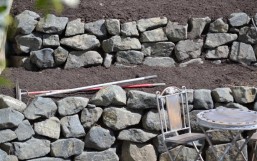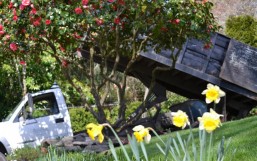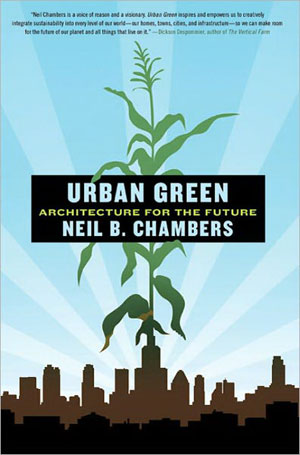
Neil B. Chambers, founder of Chambers Design, Inc. and Green Ground Zero, is an award-winning green designer with nearly 20 years of experience in the field of green building and infrastructure. He is the author of Urban Green: Architecture for the Future, and a contributing author to Treehugger. He is a national fellow with the Environmental Leadership Program, has taught at New York University and the Fashion Institute of Technology (FIT), and been featured in Architectural Record, Civil Engineering, BBC News, and The Economist.
In your new book, Urban Green: Architecture for the Future, you argue that the number of green building projects in the U.S. (4,000) is abysmally low. Even with an anticipated 30,000 projects in the pipeline, these green buildings are a drop in the bucket and won’t solve our core problems. A far more comprehensive approach is needed if we are going to reduce energy and water use, restore wildlife habitats, and develop sustainable cities over the long-term. What approach is missing and still needed?
We need to revolutionize the entire system of how buildings, real estate, infrastructure, and capital projects are approached, designed and implemented. The green buildings of today are a fair start but not anywhere near what needs to take place in the architecture, engineering, and construction world. We are basically still dealing with water, energy, and buildings the same way we were 150 years ago. I don’t want to come across as anti-green, because I’m not. But the current green building industry is only addressing a small percentage of the problems. In fact, dealing with climate change and energy efficiency is like polishing the silverware as the Titanic sinks. That may sound crazy to anyone within the green building movement.
But the truth is that climate change and many other issues would disappear if we adhered to the ecological principles that govern nature and ecosystems. In my book, I talk extensively about the power of old growth forests, estuaries, and prairies ability to sequester carbon, modulate temperature, manage stormwater, reduce flooding, and purify water better than any technology known to humans. I use specific projects that have re-established habitat and natural lands which provide incredible amounts of clean water, habitat, and better quality of life to people. Everyday there are new inventions that are promising to make our lives better – but if you look at ecological solutions, you’ll find that they outperform every cleantech idea currently in the market. Ecological solutions cost a fraction of what technological solutions cost, and need far less maintenance than the new green gadgets and gizmos being pushed as the great hope for our future.
You are against electric cars, saying they won’t be great for the environment given they will run on electricity generated from coal, at least in the near term. However, you don’t discuss the fact that car transportation CO2 emissions are some 30 percent of the total. Also, cars create air pollution. On these fronts, isn’t the move to electric vehicles a plus?
Lots of people are in love with EVs, but these new cars are not the answer to any of problems we face. EVs will cause more pollution, more carbon emission and more environmental impact than they solve. This is because of a few factors: the growth of EVs is too dependent on other technologies also growing at the same rate or faster to offset any negative ramifications they may create. These tandem technologies include things such as smart grids, renewable energy production and battery technology. It is unrealistic, and quite frankly misleading, for EV advocates to say these will happen as recommended and hoped. For example, EV advocates expect renewable energy generation to grow fast enough to feed a growing fleet of electric cars in the United States green energy. However, the percentage of U.S. electricity produced by non-hydro renewable energy sources will increase from 4 percent in 2009 to 12.3 percent in 2030, according to the “Annual Energy Outlook 2010″ released by the U.S. Department of Energy’s Energy Information Administration (EIA). That’s about half of what EVs will need to not use fossil fuels like coal. Moreover, under the current view of EVs, they will be using all of the renewable energy generated in the U.S., so there won’t be any left for buildings. The shortfall of green power will lead to an increase in coal production, which would mean more emissions, particulates, toxins, and pollution. Though oil is dirt, unit to unit, oil emits less carbon. Also, EVs don’t resolve any of the fragmentation problems caused by massive highway infrastructure. So I think it’s a huge waste of time and money to create an alternative to the combustion engine that doesn’t make our lives better, reduce our environmental impact, and improve climate change.
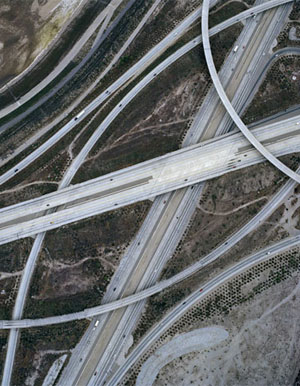
Instead of big renewable energy plants, you call for a decentralized approach to energy production within buildings. What is the benefit of large-scale use of on-site solar panels over big power plants? Also, while you note the possible environmental damage of other renewable energy approaches, you don’t discuss the fact that solar panels require mining elements and the use of chemicals. What are the possible negative environmental impacts of widespread use of solar? Are there more environmentally-sound ways to produce panels for use in buildings?
Decentralized power production is a much more democratic way of generating and distributing energy. Also, building integrated photovoltaic panels (BIPV) don’t take up additional space that large-scale arrays do. For me, it seems counter-productive to build these huge solar energy plants in the middle of nowhere when you can produce the same amount of energy within and on top of buildings where people are. I think one of the unseen benefits for BIPV for houses n this economy is that a PV array would increase the value of your home. Many of the large-scale solar farms that are proposed are sited in wilderness that is extremely fragile. This is the same mentality about energy production as that of coal and petroleum. As the dialogue of sustainability disregards the health of natural lands for the good of society, the movement has broken down and become dysfunctional. I feel the same way about advocates for nuclear power based solely on the fact that these facilities don’t emit carbon during energy production…and they call it clean. However every step in the process before and after the energy is created is highly dangerous and toxic to all living things.
You do point out that solar panels just like every other type of energy generation device will cause environmental damage – it’s part of the problem with how we conceive of energy from the very beginning. All of the electricity we use is artificially created, meaning it’s not naturally formed electricity such as that from lightning. If we want to really look at how to deal with the energy issue in our society, we should first look to nature and ask the question, “Why aren’t other species using power?” I really think that should be the basis of how we resolve the huge problems with energy production, consumption and conservation. On-site energy production is not that far fetched. Most homes and buildings have their own boilers and cooling systems. This hasn’t always been the case.
In places like NYC, there are large steam networks for heating buildings. Solar panels aren’t the best energy producers out there so I don’t usually advocate for them too much. I really like them but it’s hard to show return of investment without government incentives. I really see hydrogen fuel cells as the future for on-site energy. Everyday, more buildings and homes are disconnecting from the grid because they have hooked up to a fuel cell. There are communities throughout the world that run completely on hydrogen now. The costs of residential size fuel cells are falling too.

You state: “While architects and city planners are the one who design our megalopolises, only conservation biologists are looking at issues of ecological and land management at that scale.” This is false on a few fronts: Landscape architects have long played a central role in integrating nature into cities and, since Frederick Law Olmsted, the designer of NYC’s Central Park, have been focused on expanding the amount of green space available in urban areas to maximize public health. You seem to omit landscape architects from your discussion. Why leave out a whole professional field?
When I say architects, I’m including landscape architects. I agree that many designers have contributed to the state of cities and regions around the world. You mention Frederick Law Olmsted and Central Park (a park that is dear to my heart having lived in NYC for more than a decade). Central Park and other urban parks serve as respite from the density and crowdedness of cities. Central Park has recorded nearly 200 different kinds of bird species within it. But it’s not a habitat – at least not in the sense that I layout in Urban Green. Conservation biologists point to specific criteria for what habitat is. For example, wilderness should be able to sustain a large population of megafuana while also contributing to continental conservation strategies of interlinking wild lands together to function as a true ecological system. Many design professionals call their work ecological – in a simpler way as your question suggests. But green buildings and the majority of park spaces, greenscapes, and landscape architecture have not made the jump to a backdrop for total conservation biology. People like Josh Donlan, Illka Hanski, Viviana Ruiz, Reed Noss, Dave Foreman, and Michael Soule are envisioning a world that uses biology to paint a picture for restoring habitat at grand scales – both in size and content. Noss has worked with developers in the past to rethink real estate development in Florida to maintain panther populations. Other conservation biologists have re-examined highway design so that less species are killed by cars. The problem for designers, and I would say landscape architects the most, is that the scope of a project as well as the education and training they receive fight against the level of implementation needed to marry conservation biology with architecture and city design…that is the continental scale.
I would also say that landscape architecture should be leading the charge for change within building design and construction. You are right to suggest that landscape architects have many of the pieces to really shift the paradigm, but in my experience, landscape architects are so often too dependent on civil engineers and typically never takes a lead role in projects. There are some landscape architects who are the exception, but in general landscape architects are not running projects when a site is dominated by building. I wish landscape architecture and architecture were the same thing…we shouldn’t have them separated. Nor should conservation biologists and ecologists be separated from architecture. Until the entire design professions reinvent themselves to discard methods and mentalities that pre-date our discovery of evolution and understanding of ecosystems, we will, most likely, continue to build buildings and design parks that are no more aligned with biodiversity than, say, a parking lot.
Caroline Fraser, who writes on conservation for The New Yorker, thinks beavers are the “original landscape architects” given the way they manipulate and redesign the environment, but ultimately provide valuable ecosystem services. In your book, you say more community developers actually need to think like beavers, who may seem to wreck environmental havoc in the near term, but are sustainable in the long-run because they move to new locations when they run out of trees to use to build dams. What lessons can we take from the beaver’s approach?
I love beavers and the lessons they can teach us about ourselves. First, they let us know we are not as unique as we would like to believe – meaning, we are not the only species on this planet that is unsustainable. I realized that as I wrote Urban Green. I had the great fortune of speaking with Dr. Clive G. Jones, Terrestrial Ecologist, Senior Scientist at Cary Institute of Ecosystem Studies. He pointed out that beavers are incredibly destructive – potentially as destructive as human civilization, except that the way they build things differs from us in three major ways:
1. Their structures are not built to last forever. In my book, I have images of a beaver dam that had to be removed using dynamite. It was that strong! But in general, their lodges and dams will degrade fairly quickly once they leave the area to settle in another place. Our dams like the Hoover Dam would take thousands of years to fall apart if people just suddenly disappeared or stopped managing it.
2. Though they have a large environmental footprint within a forest, they do not take over the entire ecosystem. The resulting beaver ponds will not flood the entire forest nor are they able to eat their way through all of the trees in the forest. This is a critical difference between human development and beaver development. It says that we would be much more intertwined in the natural world, if we built cities, parks, buildings and other things in a way limited in its domination of the natural lands it is within.
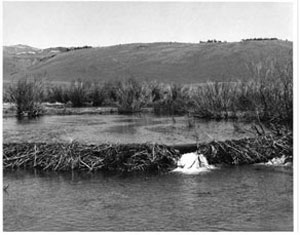
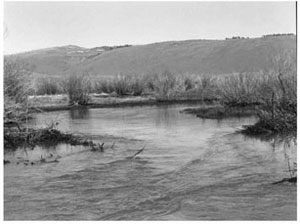
3. The third thing we can learn from beavers is that disruption doesn’t have to equal fragmentation. This is the biggest sin of human development. We build things in a way that cuts off valid pathways for species, and we demolish large chucks of land while also putting under control other parts of the land – the end result is that ancient corridors to feeding, hunting, and mating grounds are completely separated from other areas that would provide water and protection. Beavers definitely build things and cause a disruption – they can flood acres and acres of a forest, they reorient the natural hydrology and have even been shown to cause certain riverbank species to become locally extinct. But the difference is that we don’t create a condition where other animals can’t thrive. For example, though their ponds are a big change to the habitat, they create hunting areas along their edge for fox and raccoon to find food. Birds of prey can hunt fish within the ponds. Moose find saplings along the shores of the beaver’s artificial lake while many other species thrive in the changed environment. The flooding of the forest floor also sets up a good opportunity for enriched soils, because all of the sediment trapped behind the beaver dam will settle and be ideal for new growth once the beavers leave and the water slowly drains.
I think one of the greatest lessons we can learn from beavers is that complex structures and extensive influence on ecosystems can co-exist with living in harmony with nature. In essence, only a few principles within society must change, and not society as a whole.
In your vision of ecological urbanism, you argue that nature can serve as a guide to the design of the built environment using a “ecomimicry approach.” Ecosystems could serve as the “foundation of design.” Ecologically-sound networks of green roofs, eco-corridors, and parks can serve as a foundation that enables co-habiting with nature. However, you also say: “Perhaps the next generation of green roofs will be designed not by architects but by urban designers and planners in partnership with ecologists and conservation biologists. Or maybe there will be no designer at all, and biologists will design the essential parts of our future cities.” Why leave landscape architects out of this mix considering they have long served as an intermediary between architects and biologists and have professional training in ecology and plant biology?
I wasn’t my intention to leave landscape architects out of the mix. Landscape architects should take a leadership role in redesigning the way we design our cities and buildings. I think that landscape architecture should begin to incorporate into their training all of the fundamentals of architecture, engineering, planning, energy, ecology and biodiversity. One of the points I make in Urban Green is that we should become keystone species – and I think that landscape architects have a leg-up on other design professionals such as architects or mechanical and electrical engineers. But for us to really reverse the problems we see throughout the natural world, design projects will need to interconnect with larger topics such as ecological history, biogeography, and meta-populations to insure a much more robust and spirited transformation of our current civilization. When every designer, be it landscape architect or engineer or city planner, is using biogeography – vast wilderness and species reintroduction – as guiding principles of designing the many parts of our society, we will see less and less problems like energy storage, water pollution, climate change, and resource depletion.
Lastly, you argue that people can learn from nature and become a “keystone species.” What are some positive examples of how people are acting like keystone species? What are the models that need to be scaled up?
A project I’ve been involved with is restoring oysters to an area in Myrtle Beach, South Carolina, to help improve the water quality of the area. Others are also taking this approach to restore shorelines, stabilize tourism, and maintain real estate values. The side effect of using oysters instead of filtration facilities is that you also create nodes for biodiversity for game fish, crab and shrimp. Oysters are also being found to improve the air quality. Such projects are happening throughout the Gulf of Mexico and from Florida to Rhode Island. These are examples of design doing more with ecology instead of always depending on technology. With many of these projects, people aren’t yet the keystone species, but they are beginning to function in the same way beavers do within a forest. You might call these people ecosystem architects. Right now, these oyster restoration projects are not interconnected, and are only locally beneficial. Several challenges face scaling up these efforts to have national and international benefits. For example, some states do not allow oyster restoration projects to be established within estuaries and tidal basins. Of those that are lawfully installed, they have to continue to cultivate new spat to introduce to the colonies because a meta-population of oysters does not exist within the Atlantic seaboard.
In Urban Green, I also point to the Florida Everglades Restoration Project as a viable example of how people can de-engineer an area to improve the ecological functionality of an ecosystem. The efforts in the Everglades has shown that less engineering is actually better than more…and that ecology serves cities and people better than technology. Likewise, the biggest challenge is to see the Everglades as the tip of the iceberg for a much more encompassing plan to save nature and society because what starts in the swamps of southern Florida should continue up into the evergreen forests of Maine and then across Canada to British Columbia and then back down to Mexico City. This is the size we need to begin to think in as we talk about green buildings and landscapes. This is how we will become keystone species.

Image credits: (1) Urban Green / Palgrave|MacMillan, (2) Suburban California highways. Image credit: Conversions XXIII, 2008. Christoper Gielen, (3) Building fuel cell education project. UTC Power / Image credit: Connecticut Science Center, (4) Beaver dam before and after. Image credit: U.S. Fish and Wildlife Service, (5) Everglades Restored. Image credit: U.S. Fish and Wildlife Service.



